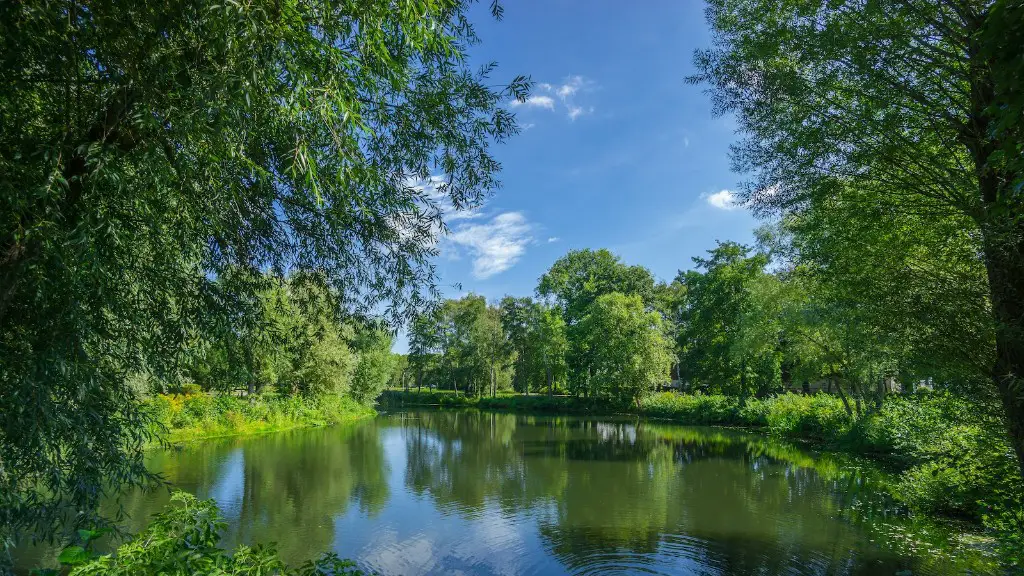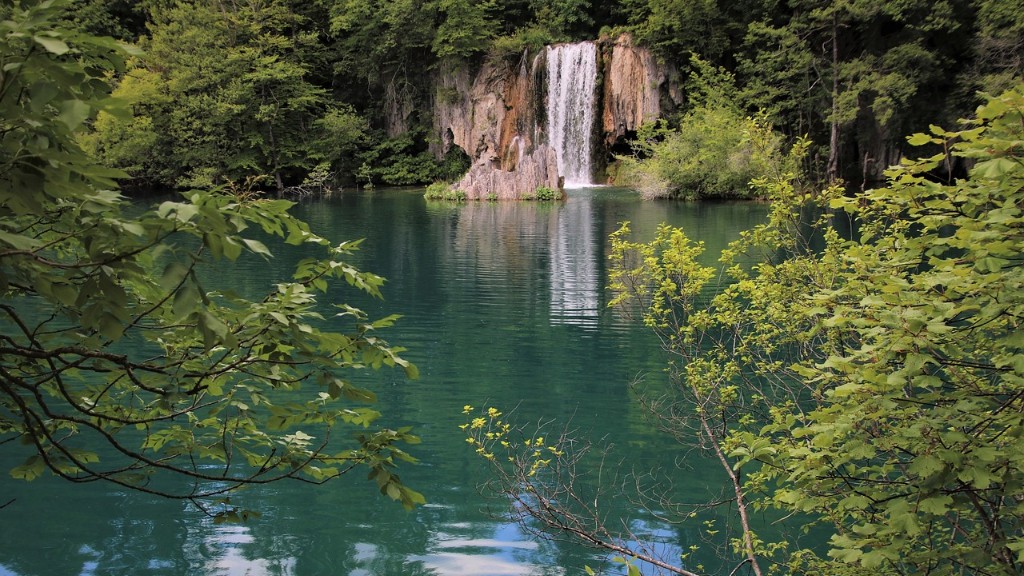What Are The Four Largest Cities On The Mississippi River
Flowing for over 2,320 miles, the Mississippi River is one of the world’s longest rivers. It is known for its cultural heritage, abundant wildlife and rich industrial history. As it runs through America’s heartland, it passes through or near many major cities. These four largest cities on the Mississippi River are St. Louis, Memphis, Minneapolis-St. Paul, and New Orleans.
St. Louis
St. Louis is the largest city on the Mississippi River and the second-largest city in the state of Missouri. It is considered the gateway to the Midwest, and is home to the iconic Gateway Arch. Sitting on the western bank of the river, the city has a population of over 300,000 and an impressive urban landscape. It is home to iconic sports teams such as the St. Louis Cardinals, and is known for its unique neighborhoods, vibrant nightlife, and robust dining scene.
This city is also a hub for the arts. It boasts a world-renowned symphony, ballet and arts museums, as well as a diverse and eclectic music scene. St. Louis is known for its ample parkland, including Forest Park, which is the sixth largest city park in the country. It is a natural draw for outdoor enthusiasts, who flock to the banks of the Mississippi to partake in a range of outdoor activities.
Memphis
The second largest city on the Mississippi is Memphis, which sits on the east bank of the river in the state of Tennessee. Known as a “musical Mecca” for its deep connection to the blues and soul music, the city boasts iconic attractions such as the National Civil Rights Museum, Graceland, and Sun Studio. Memphis also has a rich culinary scene and is known for its barbecue. The region’s rich cultural heritage is often celebrated in festivals and events, from the legendary Memphis in May to the World Championship Barbecue Cooking Contest.
Memphis is home to over 650,000 people, and it is a major hub for industry and transportation. It is home to the third-busiest cargo airport in the world. The city is home to several major Fortune 500 companies, and its unique location at the convergence of two major interstates make it an ideal commercial hub.
Minneapolis-St. Paul
Minneapolis-St. Paul is located in the northernmost state on the Mississippi River and is the 16th largest metro area in the country. It consists of two major cities connected by the Mississippi. The metropolitan area has a population of nearly 3.5 million and is known for its vibrant art and culture, beautiful parks, and diverse dining and entertainment offerings.
The Twin Cities are known for their innovative spirit and entrepreneurial culture. The region’s booming tech industry has earned it the nickname “Silicon Prairie”. Minneapolis-St. Paul is a transportation hub for the Midwest, and the downtown Minneapolis skyline boasts iconic glass-paneled skyscrapers, reflecting its modernist architectural style.
New Orleans
New Orleans is the fourth largest city on the Mississippi River, located in the state of Louisiana. Its strategic location at the mouth of the river makes it a significant port city, and the largest city in Louisiana. It is characterized by its distinct French-Creole culture, cuisine and traditions, as well as its vibrant nightlife and historic architecture.
New Orleans is renowned for its unique music, with influences ranging from jazz, blues, gospel and funk. It is also home to the annual Mardi Gras celebration, an iconic event that takes place on the eve of Ash Wednesday. The city has a lot to offer, from its colorful parades, historic museums, and exciting cultural festivals to its numerous parks and outdoor activities.
The Economic Impact
The four largest cities on the Mississippi contribute billions to the US economy each year. This is largely due to the region’s strategic geographic location and the opportunities for industry and commerce that it provides. St. Louis, for instance, is home to Fortune 500 companies such as Anheuser Busch and Monsanto. The region’s transportation infrastructure facilitates the seamless flow of goods and services from the East Coast to the Midwest, and vice versa.
The Mississippi River contributes to millions of jobs in the US and thousands more across the world. It plays a key role in the production of oil, gas and chemicals which are used in almost every industry in the country. The river also serves as an important source of energy, providing hydropower in the form of dams and plants on the Mississippi.
The cities along the Mississippi River are integral to the region’s ecological system as well. They provide important habitats for various species of aquatic life, as well as a corridor for birds that use the river for their seasonal migrations. Finally, it is also important to note the cultural heritage of the four largest cities on the Mississippi, which contributes to the region’s vibrant culture, art, music and cuisine.
The Environmental Impact
The impact of the Mississippi River on the environment is both positive and negative. Its waters provide sustenance to millions of people in the US, allowing them to live and thrive in the region. On the other hand, it also carries pollutants from factories and industries, which can contaminate the drinking water of the people and animals living in the area.
Along with sediment, these pollutants can build up in the river, impacting aquatic habitats. The presence of invasive species has also been linked to human activities in the area, further impacting fish and other wildlife living in the river. The large amount of physical activity, such as shipping and boating, can also have a negative impact on the environment.
Fortunately, there are measures being taken to mitigate the impact of the Mississippi River on the environment. Governments, organizations and individuals are joining forces to restore and protect the fragile ecosystem of the region. This includes initiatives such as green energy production, waste management and water quality programs, which are all aimed at preserving the health of the river and its inhabitants.
What Can Be Done
The cities located on the Mississippi River have a responsibility to take action to protect and improve the river’s ecosystem. This includes reducing pollution, supporting conservation efforts and engaging in sustainable activities. It is also crucial that the public is made aware of the importance of the river’s health and its impact on the region. This can be done through community outreach, education programs and campaigns.
In addition, the cities must ensure that their own activities and operations do not add to the pollution of the river. This includes switching to renewable energy sources, reducing water waste and finding ways to reduce emissions. It is also important for businesses to take action, by following eco-friendly practices and committing to conservation efforts.
The Mississippi River is an integral part of American culture and history. Its four largest cities have the opportunity to protect and preserve this iconic waterway for future generations. It is their obligation to make sure that the river remains healthy and safe for everyone who lives and works in the area.
New Development
In recent years, new developments have emerged along the Mississippi River. From recreational areas to housing developments, the region is becoming increasingly attractive for new residents and investment. This presents an opportunity for the four largest cities on the Mississippi to capitalize on the influx of people in search of a future in the area.
One such development is the conversion of unused industrial sites along the river into vibrant communities. The Minneapolis-St. Paul area, for example, has seen the building of several new apartment complexes and condominiums, which are becoming popular among young professionals. The development of these sites also creates jobs in construction and property management, as well as offering new career opportunities for those living in the area.
The construction of new recreational areas along the Mississippi offers new opportunities for tourists and local residents alike. These attractions include trails for walking, biking and kayaking, as well as parks for picnics, playgrounds and outdoor activities. This presents an opportunity for businesses to set up shop in the area, creating further economic growth and job opportunities.
The four largest cities on the Mississippi River are home to a range of opportunities for people, businesses and industries. By creating a positive, sustainable environment, they can ensure that the region remains a vibrant and attractive place to live and work.
The Mississippi In The Future
The future of the four largest cities on the Mississippi River is bright. By recognizing the importance of the river to the region and taking progressive steps to preserve and protect it, they are setting the stage for further innovation and economic development in the region. The influx of people and businesses to the area provides a unique opportunity for economic growth and job creation.
By investing in green technology, new energy sources and sustainable practices, the four cities can create a brighter future for the Mississippi. This will preserve its natural beauty, as well as create career opportunities in industries such as green energy, transportation and urban development.
Finally, the cities must engage with their communities and provide opportunities for growth, education and engagement. This could be through public events and activities, or by providing access to the river for fishing, boating and swimming. By creating a friendly, engaging and inspiring environment, the four cities can create a lasting legacy for the Mississippi and its citizens.





